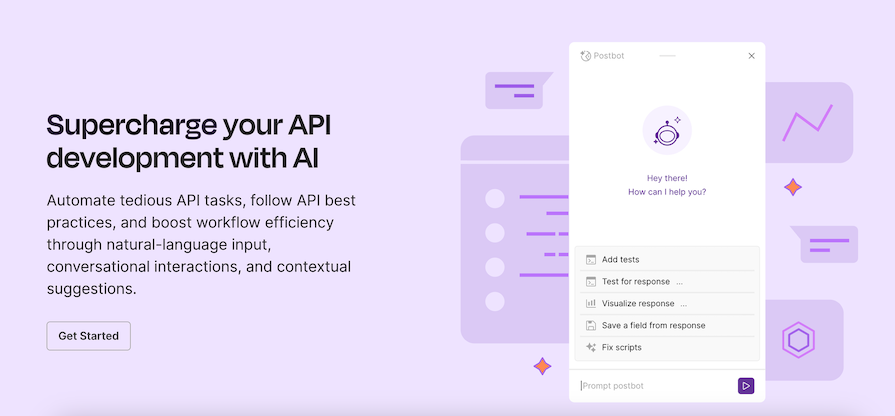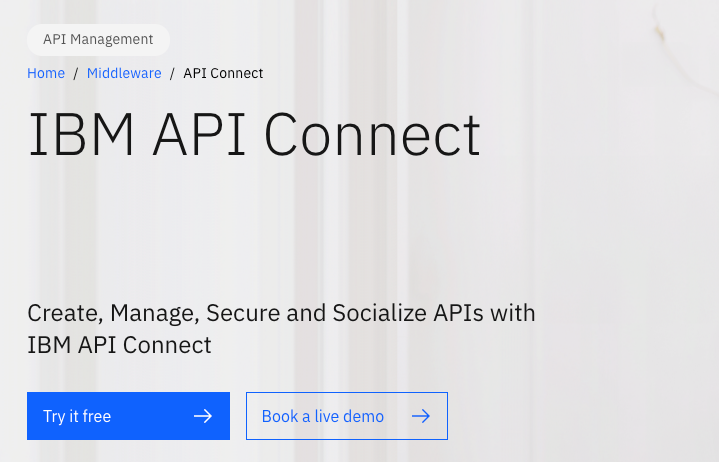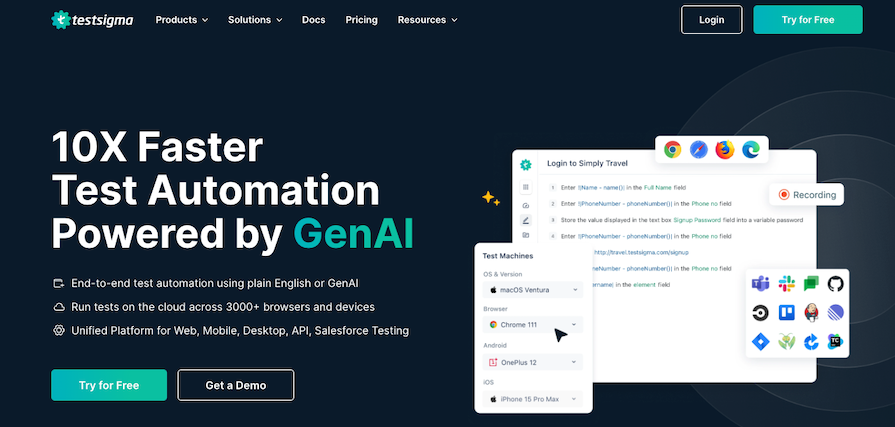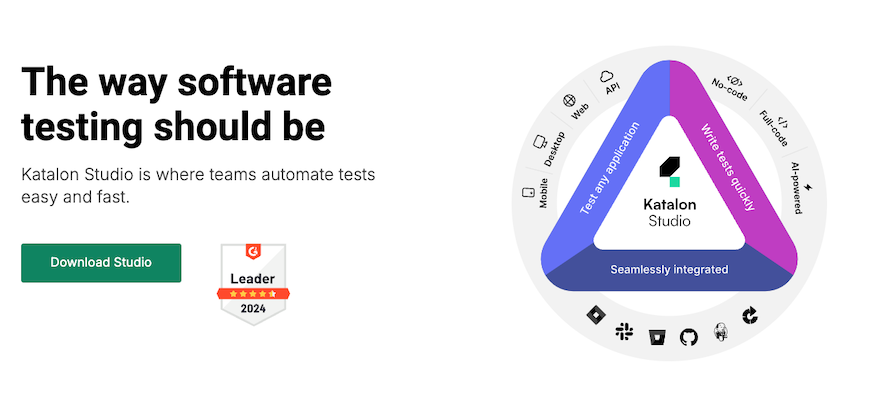Seamless interactions between a software system are made possible by APIs. Whether it is a simple interface or something more complex, a lot of abstraction details are hidden from users. Because so much effort and planning goes into API design, development, and testing to ensure its security, reliability, and performance, it can sometimes be more efficient to use AI tools for API testing and development.

In this article, we’ll cover six such AI tools. First, we’ll compare how long it would take to manually write tests for APIs vs. using AI to do so. Then, we’ll cover how AI can speed up writing and executing tests for APIs and how to guard against the AI’s hallucinations, bogus test cases, or other problematic outcomes.
Manual tests vs. Automated tests
The time it takes to write tests for APIs can vary significantly depending on many factors, including the number of test cases required, API complexity, and the experience of the tester or developer.
For complex APIs with numerous endpoints, edge cases, and scenarios, manual testing can be time-consuming and error-prone. It can take days or even weeks to create a comprehensive test suite to cater to all scenarios.
Automation can significantly speed up the process of writing tests for APIs. In many cases, AI-powered tools can generate test cases in a matter of minutes or hours, compared to the days or weeks it would take for manual testing.
Postbot by Postman

Postbot is an AI assistant for API workflows within Postman. With Postbot, you can write test scripts and documentation, visualize large sets of response data, troubleshoot API requests, and boost workflow efficiency through natural language input, conversational interactions, and contextual suggestions.
The earliest version of Postbot was released in May 2023, with which users could add basic Postman tests and write in FQL (Flows Query Language). The later update to Postbot came as a major release in July. This release introduced the addition of new features such as natural language support, generating test suites for collection, identifying user intents and mapping them to relevant in-app tasks, visualizing API responses, and generating test scripts.
Postbot by Postman is free as an add-on to try on the free Postman plan with a limited number of activities per user each month.
Postbot features
- Generate automatic test scripts: Postbot uses a Generative AI model to generate test scripts and documentation, saving you hours of work and effortlessly keeping your documentation up to date
- Response data visualization: Manually scanning or reading through large response (JSON) datasets can be tedious and time-consuming. With Postbot, you can simply prompt or instruct the tool to visualize your data as a bar graph, table, chart, etc., to fit your needs
- In-app AI support: When you encounter an issue working with Postbot, instead of searching online for a possible solution, you can easily turn to Postbot for in-app support
Postbot pros
- Postbot integrates seamlessly with Postman and it is available for all Postman users as an add-on
- Postbot uses an intelligent recommendation system to recommend ways to improve API quality
- Using Postbot enhances test quality while covering a wide range of scenarios and edge cases
- It is available to teams of all sizes, from individuals to enterprise teams
Postbot cons
- Postbot is only available in the Postman environment and is limited to Postman users
- Test scripts generated by Postbot may require additional verification to ensure accuracy
- Managing the associated false positives and false negatives generated by the AI model can be challenging
- As with any AI testing tool, writing a well-crafted prompt is a key challenge
LintGPT by Optic
LintGPT is a powerful AI tool designed to improve the consistency and quality of API specifications. It uses a fine-tuned AI algorithm to understand the rules and specifications that you write and apply them to OpenAPI definition documents. LintGPT also automates the process of writing API style guides using natural language.
LintGPT uses AI to automate the linting process, ensure API standards, and contribute to API governance within an organization. Ultimately, LintGPT helps development teams ship better APIs (documentation and design) by making it easier to use OpenAPI.
N.B., At the time of writing this article, LintGPT is in beta and only available for Optic cloud customers.
How LintGPT works
LintGPT supports OpenAPI and other specification formats. The specification file is imported into LintGPT using the Optic CLI tool. Once imported, LintGPT scans the document for syntax and API structure, inconsistent naming conventions, appropriate use of HTTPS methods, accurate parameter descriptions, inaccurate status codes, and more.
These issues are flagged and recommendations for correction are raised where necessary. A key feature of LintGPT is to enforce customizable linting rules. Users set a linting rule against which API specifications are tested. For example, one of the rules states the following:
Properties that sounds like they are dates should use "format: datetime or format: timestamp"
Because of this rule, Optic will review the OpenAPI specification, and whenever it spots a property that sounds like a date, such as creationDate, the following error and suggestion will be raised:
⚠ [format-date] The property name 'creationDate' sounds like a date.
Please use format: 'datetime' or 'timestamp'
Upon successful analysis, LintGPT generates comprehensive reports that include all issues spotted within the API specification, each accompanied by a recommendation to resolve it.
LintGPT features
- LintGPT checks for inconsistencies within API specification
- Automates specification linting: To ensure an API specification meets industry standards and best practices, LintGPT uses AI to analyze API specifications and identify areas for improvement
- Provides accurate and detailed reports on identified issues, and offers recommendations to resolve identified issues and improve documentation accuracy
- Allows users to write linting rules to suit their project requirements
LintGPT pros
- Ensures a high-quality API design and documentation by automatically detecting inconsistencies and suggesting possible ways to improve them
- Helps API documentation align with API behavior
- Allows users to write linting rules
LintGPT cons
- The scope of use is limited to API documentation and specification as it does not comprehensively cover API testing and development
- Using LintGPT requires access to the Optic platform
- Recommendations provided by LintGPT may still require further manual review as an added step to confirm accuracy
- In complex APIs, LintGPT may not capture all possible linting inconsistencies
IBM API Connect

IBM API Connect is an API management solution that helps users create, run, secure, socialize, and manage APIs across clouds and on-premises. It is useful for the following use cases:
- Shifting security requirements
- API lifecycle management or version control
- A significant increase in the number of APIs will require a comprehensive API management tool like IBM API Connect to manage them
IBM API Connect consists of a comprehensive suite of tools that users leverage to manage the full API lifecycle. It offers useful features ranging from API creation, testing, security, and an API analytics dashboard.
With IBM API Connect, you can perform all of the lifecycle steps in a single integrated platform, removing the need to use multiple API management platforms to achieve the same capability. The goal of IBM API Connect is to provide a unified and scalable API management platform that allows businesses to socialize their APIs.
How to use IBM API Connect
The following are steps to utilize IBM API Connect:
- Create API: IBM API Connect provides an intuitive graphical user interface with which users can design APIs or import API definitions from existing OpenAPI specifications. Once an API has been created, it needs to be tested. With a few button clicks on IBM API Connect, users can generate test cases using AI
- Manage API: The next step is to manage the API. IBM API Connect makes it easy for businesses to manage their API through the entire API lifecycle. It allows developers to update and manage different versions of the API while allowing existing users to keep using it. To ensure APIs perform optimally, businesses using IBM API Connect can enforce several usage policies such as API rate limiting, CORS (Cross-Origin Resource Sharing), and IP blacklisting
- Secure API: IBM API Connect offers a range of capabilities to ensure secure access to your APIs. Businesses can implement API security measures such as authentication and authorization using OAuth, OpenID Connect, and third-party services
- Socialize API: IBM API Connect includes a built-in, web-based developer portal with which other developers can interact, consume, and socialize with your API. Developers or businesses can monetize their APIs through the developer portal by setting pricing tiers or usage limits
IBM API Connect features
AI Gateway
Businesses using IBM API Connect can access AI services via APIs. It helps organizations establish connections between their applications and third-party AI APIs. The AI Gateway acts as a gatekeeper for both data and instructions that flow between these systems. It provides a policy framework that manages how to use AI APIs within your applications.
API Gateway
The IBM API Connect API Gateway is an enterprise gateway designed based on IBM DataPower to securely expose business applications and data on-premises or across the cloud. It provides a comprehensive set of policies on traffic management, security, and support for non-HTTPS protocols. This gateway acts as the gatekeeper to other applications interacting with your APIs and ultimately helps protect your APIs at runtime. It also logs and reports API interactions to your IBM API Connect analytics dashboard for insight.
API Manager
IBM API Connect provides an API Manager user interface with which developers can manage, organize, publish, and analyze APIs across their entire lifecycle. It gives the developers the ability to version their APIs and have complete control over API visibility across consumers including internal and external consumers.
API testing
To ensure the efficiency, reliability, and trust of the API contract, IBM API Connect provides developers with a robust testing capability that utilizes AI and automation to test APIs without having to manually write tests.
Now that we have taken a look at the various features of IBM API Connect, let’s explore its pros and cons.
IBM API Connect pros
- Provides a comprehensive API lifecycle management flow
- Helps developers manage API both across the cloud and on-premises
- Provides a built-in API analytics dashboard that helps businesses make informed decisions
- Provides a range of security measures to ensure that APIs are secured and reliable
- Exposes APIs for both internal and external users
IBM API Connect cons
- IBM API Connect is not cost-effective for businesses with limited budgets
- While powerful and comprehensive, the IBM API Connect platform can be cumbersome and complex to navigate for small teams and inexperienced developers
- Junior developers who are new to API management tools might find it difficult to use
- Relies heavily on the IBM ecosystem
Apigee

Apigee is a Google Cloud native API management platform that can be used to build, manage, and secure APIs. It was founded in 2004 as Sonoa Systems before rebranding as Apigee in 2010. It merged into Google Cloud after it was acquired by Google in 2016.
In 2023, Google Cloud Next introduced Duet-AI into Apigee API management and application integration to enable developers to build APIs, integration flows, and extensions that connect Vertex AI or ChatGPT to real-world data through APIs.
Apigee supports REST, GraphQL, gRPC, and SOAP, providing flexibility to easily implement different API architectural styles. Apigee offers high-performance API proxies to create a consistent and reliable interface for your backend services. It enhances the API’s availability by providing built-in support for load balancing and failover across multiple backend server instances.
Apigee is a complete API management platform that is available for both producers and consumers of APIs.
Apigee features
- API deployment: Apigee supports asynchronous deployment. Deployment makes APIs developed using Apigee available to users both internal and external users
- Environment group: The Apigee environment group is the basic mechanism for defining the way requests are routed to individual environments. You define hostnames on your environment groups (not on individual environments), and Apigee routes requests to the environments within a group using those hostname definitions. This is the software environment for creating and deploying API proxies in Apigee
- Policy formulation: Apigee allows organizations to implement usage policies on an API product, such as rate limiting, traffic quotas, and request/response transformations. This management helps ensure that API products are used in accordance with established guidelines, stopping preventable issues and unauthorized usage
- Monetization: Apigee supports API monetization. As an API provider, you need an easy-to-use and flexible way to monetize your APIs so that you can generate revenue whenever your APIs are used. Using Apigee’s monetization feature, you can add a rate plan to an API product. The rate plan lets you charge the developers for using your APIs. You can also configure the rate plan to share your API revenue with the developers
- Security: Apigee consists of advanced API security that continually monitors your APIs to protect them from security threats, including attacks from malicious clients and abuse. This security analyzes your API traffic to identify suspicious API requests and provides tools to block or flag those requests if you decide to do so. In addition, the API security evaluates your API configurations to ensure they meet security standards and gives you recommendations for improving them if needed
Apigee pros
- API discoverability: Apigee offers API producers a developer-focused portal where client app developers can discover your APIs, find the documentation required to build applications using them, and register as an app developer to stay in sync with any updates or changes
- API reliability: Apigee provides a consistent interface for API management and consumption. You can execute policies for security, traffic management, and efficiency of your APIs at the proxy level. Using Apigee proxies allows you to isolate API consumers from your backend service. This means that you can make changes to your backend while allowing client applications to consume your services without interruption
- API insights: Apigee offers Advanced API security, API monitoring, and analytics features that enable API producers to secure access to their services, monitor uptime and traffic with alerting, and gain insight into how their APIs are being used
Apigee cons
- Cost: Apigee can be expensive, especially for small to medium-sized businesses. Its pricing is tailored towards enterprises, and the cost can quickly escalate with increased API traffic and advanced features
- Platform complexity: The platform’s extensive feature set can be overwhelming for small teams or organizations new to API management. The added features and security layers can introduce performance overhead, especially in high-traffic scenarios, unless carefully managed
- The cost of migration: Organizations migrating to Apigee from another platform may face challenges due to the complexity of the platform and the need for extensive configuration
Testsigma

Testsigma is a reliable AI-powered testing tool with various features for creating automated tests with natural language processing. It’s cloud-based, eliminating the need for installation or setup, and can be used for testing various types of software applications.
Testsigma is particularly known for its codeless automation approach, making it accessible to both technical and non-technical users. With its AI capabilities, Testsigma accelerates the process of creating, executing, and maintaining API tests, ensuring that software teams can deliver quality applications faster. It also offers enhanced security, extensive test lab, project and review management, and powerful reporting capabilities.
Testsigma features
Testsigma is a cloud-based, low-code platform for end-to-end testing. It provides the following features:
- NLP-powered tests: Write tests in plain English using natural language processing to interpret and execute tests
- User and role management: Easily manage multiple projects
- Version control: Manage and migrate versions of your test using Testsigma’s versioning capabilities
- Reporting and analytics: Testsigma provides comprehensive reports that help you track status, identify failures, analyze performance, and ultimately offer suggestions where necessary
- Multi-environment support: Testsigma supports API testing across various environments and platforms, including web, mobile, and desktop, ensuring consistent performance and functionality across different deployment scenarios
Testsigma pros
- The codeless test creation and natural language processing make Testsigma accessible to users of all skill levels, reducing the learning curve
- Testsigma’s AI features, including smart test suggestions and failure analysis, optimize the testing process and improve overall test coverage
- Testsigma supports a wide range of environments and platforms, making it a versatile tool for comprehensive API testing
- Detailed real-time reports and AI-powered insights help teams quickly identify and address issues, ensuring high-quality software delivery
Testsigma cons
- Testsigma manages test executions adeptly. However, handling complex test data scenarios can sometimes pose challenges
- Although Testsigma boasts a versatile API, certain integrations with lesser-known tools or specific versions can experience snags
- May require some time to learn the platform, especially for those new to API testing
- While Testsigma offers a free plan, the more advanced features are locked behind the Professional and Enterprise plans, which can be costly for smaller teams
- The platform’s reliance on AI for test suggestions and failure analysis may not always align with specific testing needs, and manual intervention may still be required to ensure accuracy
Katalon Studio

Katalon Studio is an all-in-one automation testing software tool developed by Katalon Inc. It was first released for internal use in January 2015, and by September 2016, it was made available for public use.
Katalon Studio provides a platform that addresses the complexity and thoroughness required in API testing and development. It has dual scripting interfaces for users with different programming skills. Katalon’s intuitive Integrated Development Environment (IDE) feature contributes to its ease of use as it helps in debugging, code suggestion, and syntax highlighting. This means that testers with limited technical knowledge can use a simpler user interface that doesn’t require writing code. It supports cross-browser functionality for web, mobile, Windows desktop, and API testing.
Katalon pricing plans range from free to paid (Premium and Ultimate) plans. At the time of writing, its Premium plan costs $175/user/month.
Katalon Studio features
Below are some features that make Katalon Studio a powerful tool for API testing:
- Through the use of AI, Katalon provides detailed defect analysis in English. It offers suggestions for code improvement, ensuring robust performance before deployment
- Cross-browser support: Katalon Studio enhances web testing efficiency by enabling tests across multiple browsers, including Chrome and Firefox, ensuring applications perform consistently in different environments.
- Built-in intuitive IDE: The inclusion of a dedicated IDE makes script creation and debugging more convenient and tailored, supporting various programming languages for detailed test scenarios
- Katalon Studio’s Object Spy feature simplifies test object creation by capturing web elements in real-time, generating their unique selectors like XPath, and enhancing test script precision
- The ability to run parameterized tests with different data sets enhances test coverage and ensures that your APIs handle various scenarios effectively
- Katalon Studio’s codeless automation allows you to create API test cases without writing code, using a simple drag-and-drop interface. This feature makes it accessible to testers with varying levels of technical expertise
Katalon Studio pros
- Katalon Studio’s codeless automation and intuitive interface makes it accessible to users of all skill levels, reducing the learning curve
- The tool’s capability to integrate smoothly with popular CI/CD pipelines and other platforms like git and JIRA enhances a DevOps-centric workflow is a huge advantage
- Multi-platform support makes it a great option as a go-to API testing tool
Katalon Studio cons
- Due to its complexity, Katalon can be difficult to use and integrate with other external services by first-timers and absolute beginners
- Katalon Studio can be resource-heavy during test execution, potentially slowing down parallel tasks on the same machine
- While the codeless automation is a strength, it may be limiting for advanced users who need more control over complex test scenarios
The concern of AI hallucination
AI-powered tools can significantly accelerate the process of writing API tests, but it’s essential to be aware of the potential risks of hallucinations. Hallucinations occur when AI models generate incorrect outputs. These hallucinations can occur due to several reasons, such as the AI misinterpreting API specifications, overgeneralizing patterns, or simply generating output that looks right but lacks accuracy.
Below are strategies for guarding against hallucinations:
- Always review AI-generated test cases
- Use properly educated, tested, and trained AI models
- Continuously monitor and track AI model performance over time to gain an understanding of how consistent or inconsistent its result can be
Conclusion
Artificial Intelligence tools provide developers and testers with a wide range of options to develop and test their APIs. Each tool has its unique proposition.
In this article, we discussed some of the best AI tools for API testing and development, exploring their features, pros and cons, and pricing plans. We also explored the concept of AI hallucination and how to guard against it.
I hope you enjoyed this article. Leave a comment and let me know which you plan on using in your next project.